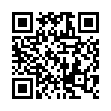|
This article is cited in 1 scientific paper (total in 1 paper)
Artificial Intelligence, Knowledge and Data Engineering
Deep transfer learning of satellite imagery for land use and land cover classification
T. Yifter, Yu. Razoumny, V. Lobanov
Peoples' Friendship University of Russia
Abstract:
Deep learning has been instrumental in solving difficult problems by automatically learning, from sample data, the rules (algorithms) that map an input to its respective output. Purpose: Perform land use landcover (LULC) classification using the training data of satellite imagery for Moscow region and compare the accuracy attained from different models. Methods: The accuracy attained for LULC classification using deep learning algorithm and satellite imagery data is dependent on both the model and the training dataset used. We have used state-of-the-art deep learning models and transfer learning, together with dataset appropriate for the models. Different methods were applied to fine tuning the models with different parameters and preparing the right dataset for training, including using data augmentation. Results: Four models of deep learning from Residual Network (ResNet) and Visual Geometry Group (VGG) namely: ResNet50, ResNet152, VGG16 and VGG19 has been used with transfer learning. Further training of the models is performed with training data collected from Sentinel-2 for the Moscow region and it is found that ResNet50 has given the highest accuracy for LULC classification for this region. Practical relevance: We have developed code that train the 4 models and make classification of the input image patches into one of the 10 classes (Annual Crop, Forest, Herbaceous Vegetation, Highway, Industrial, Pasture, Permanent Crop, Residential, River, and Sea&Lake).
Keywords:
neural networks, deep transfer learning, land use land cover classification, satellite imagery.
Received: 01.07.2022
Citation:
T. Yifter, Yu. Razoumny, V. Lobanov, “Deep transfer learning of satellite imagery for land use and land cover classification”, Informatics and Automation, 21:5 (2022), 963–982
Linking options:
https://www.mathnet.ru/eng/trspy1215 https://www.mathnet.ru/eng/trspy/v21/i5/p963
|

| Statistics & downloads: |
| Abstract page: | 170 | | Full-text PDF : | 173 |
|




 Contact us:
Contact us: Terms of Use
Terms of Use
 Registration to the website
Registration to the website Logotypes
Logotypes








 Citation in format
Citation in format 
